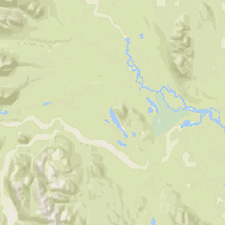There’s no better place to get a grasp on Alaska’s history—really, its many histories— than by visiting the Anchorage Museum. The state’s largest museum is truly a world-class experience, offering a compelling overview of Alaska history, art, culture, and science. Get the dirt on the gold rush, learn how Alaska’s earliest people survived sub-zero temperatures, see the result of North America’s biggest earthquake, and much more. It’s fascinating fun for the whole family.
Alaska’s History & More
Right downtown, the Anchorage Museum tells the story of the North—from Alaska’s history, art, and culture to the wonder and challenges of living in Alaska. This overview is the perfect way to begin your Alaska experience. Start with over 600 cultural belongings from Alaska Native cultures, on loan from the Smithsonian Institution, that bring the state’s varied Indigenous cultures to life. These include ceremonial masks, battle armor, and waterproof clothing made from seal intestines. Watch short films and see photographs that reveal life in Alaska and how traditions are being lived and celebrated.

The museum’s interactive Discovery Center has something for everyone
The museum includes a hands-on discovery center that’s perfect for children. The 80 kid-friendly science exhibits in the Discovery Center include a sea life tank and small planetarium, where you can see winter’s Northern Lights even in summer.
Plan Your Visit
You could easily spend four hours enjoying the museum, but even two hours will let you see the highlights. In summer, take one of the free daily tours led by engaging docents, watch demonstrations in the science center, and on Tuesdays grab lunch from a food truck and have lunch on the lawn. Year-round, you’ll find scientific and culture presentations with book signings, evening events, classes, and workshops. And there’s always a revolving exhibition or two.
One spot not to miss: the Rasmuson Wing, which includes the museum’s impressive Art of the North galleries, with paintings, sculpture, photography, video and other media offering varied perceptions of the Northern landscape and wilderness through historical and contemporary depictions of both land and people.
Permanent Exhibits
Living Our Cultures: At the Smithsonian Arctic Studies Center, this is the largest and longest running of any Smithsonian institution loan anywhere in the world.
Alaska Exhibition: Hear the story of Alaska through multiple perspectives in an engaging, interactive way. Explore 360-degree views of popular Alaska hot spots or build your own community on a huge screen by adding in people, symbols, structures, and animals.
Art of the North: This contemporary art gallery is filled with art and sculpture from iconic Alaska artists.
Dining & Shopping
Muse: Bountiful, hearty, healthy food – Alaska Style. Anchorage Museum’s full-service restaurant features menu offerings from small bites to full-course meals. Casual with a contemporary vibe.
Atrium Café: Coffee bar with snacks, desserts, and quick bites, as well as coffee, wine, and beer.
Store: This is not your usual museum store. They work with local and Indigenous artists to carry art and craft items that spark a sense of wonder. Shop for locally made contemporary jewelry, Alaska Native carvings, museum-designed and wearables, books about Alaska, educational toys and games, and much more.
Prices & Dates
| Season | Year Round |
| Rates | Adults // $25 |
| Alaska Residents // $20 | |
| Senior / Military / Student (with ID) // $18 | |
| Children 6-12 // $12 | |
| Children 0-5 // free | |
| Private Docent Fee // $200 | |
| Hours | Museum // Please check the website for current open days and hours of operation. www.anchoragemuseum.org |
| Muse Restaurant // Open 11:30am to 6pm daily May 1st - Oct 1st |
Show Map
Anchorage Museum Audio Guide
Video, audio and rare artifacts converge to create an unforgettable overview of Alaska Native culture. Marvel at 600 Alaska Native objects on loan from the Smithsonian Institution, including a Tlingit warrior’s helmet, Inupiaq whale hunting tools, and a hand-sewn Yup’ik parka made from 93 ground squirrels. Hear Alaska Native languages and see glimpses of contemporary life.















